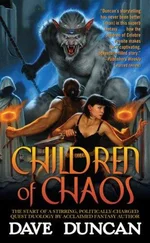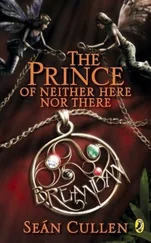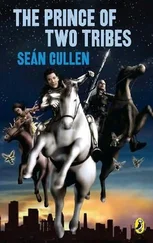Jeffco released its report on May 15, as ordered. The focus of the package was a minute-by minute timeline of April 20, 1999, in great detail. It dramatically illustrated how fast everything happened: just seven and a half minutes in the library, all the deaths and injuries in the first sixteen minutes. How convenient, critics said. The cops’ report was dedicated to illustrating that the cops had never had a chance.
As expected, the report ducked the central question of why. Instead, it provided about seven hundred pages of what,how, and when . The logistics were useful, but they were hardly what people had been waiting for.
There were three paragraphs about advance warning by the Browns: one paragraph summarizing and two defending. The department claimed it had been unable to access Eric’s Web site, despite the fact that officials had printed the pages, filed them, and retrieved them within minutes of the attack on April 20, and had cited them at length in the search warrants issued before the bodies were found. But a year after the murders, Jeffco was still suppressing the file and the search warrants. So the families suspected a lie, but they couldn’t prove it.
Jeffco was ridiculed for its report. Officials seemed truly bewildered by the response. Privately, they insisted they were just acting the way they always did: building a case internally, keeping their conclusions to themselves. Communicating the results was the prosecutors’ role. It wasn’t their job. They still couldn’t grasp that this was not any normal case.
____
As the battles intensified, compassion fatigue set in. Hardly anyone said it out loud.
Chuck Green, a Denver Post columnist and one of Denver’s nastier personalities, broke the ice. He stunned the families with a pair of columns, charging them with “milking” the tragedy.
They had gotten millions, he wrote. “It has been an avalanche of anguish never before witnessed, yet the Columbine victims still have their hands out for more.”
The Parents Group was caught unaware. They’d had no idea. They were more stunned by the support for Green’s ideas. “All of us are sick and tired of the continued whining,” a reader responded. Another said those sentiments had been circulating for quite a while—“whispering in small circles, amongst clouds of guilt.”
It was out in the open now.
____
The anniversary also offered a window of political opportunity. Tom Mauser had been energized at the NRA protest and devoted himself to the cause. “I am not a natural leader, but speaking out helps me because it carries on Daniel’s life,” he said. Tom took a one-year leave of absence to serve as chief lobbyist for SAFE Colorado (Sane Alternatives to the Firearms Epidemic). They supported several bills in the Colorado legislature to limit access to guns for minors and criminals. Prospects looked good, especially for the flagship proposal to close the gun-show loophole. It was narrowly defeated in February. A similar measure bogged down in Congress.
So a week before the anniversary, President Clinton returned to Denver to encourage survivors and support SAFE’s new strategy: to pass the same measure in Colorado with a ballot initiative.
Colorado Republican leaders rebuked the president and refused to appear with him. Republican Governor Bill Owens supported the ballot initiative but refused to attend an MSNBC town hall meeting hosted by Tom Brokaw until President Clinton left the stage, midway through the show.
The visit appeared to force a little movement in Washington. Just before the meeting with Brokaw, House leaders announced a bipartisan compromise on gun-show legislation. But it had been a year already, and there was still a long way to go.
Tom Mauser kept fighting. At a rally the same week, SAFE spread 4,223 pairs of shoes across the state capitol steps—one for each minor killed by a gun in 1997. Tom took the sneakers off his feet and held them up to the crowd. They had been Daniel’s. Tom took to wearing them to rallies. He needed a tangible link to his son. And they helped the shy man connect Daniel to his audience.
May 2, the governor and attorney general—the state’s most prominent Republican and Democrat—put the first two signatures on the petition for the Colorado ballot initiative. It required 62,438 signatures. They gathered nearly twice that many.
The measure would pass by a two-to-one margin. The gun show loophole was closed in Colorado.
It was defeated in Congress. No significant national gun-control legislation was enacted in response to Columbine.
____
The season ended well. On May 20, the second class of survivors graduated. Nine of the injured crossed the stage, two in wheelchairs. Patrick Ireland limped to the podium to give the valedictory address.
It had been a rough year, he said. “The shooting made the country aware of the unexpected level of hate and rage that had been hidden in high schools.” But he was convinced the world was inherently good at heart. He had spent the year thinking about what had gotten him across the library floor. At first he assumed hope—not quite; it was trust. “When I fell out the window, I knew somebody would catch me,” he said. “That’s what I need to tell you: that I knew the loving world was there all the time.”
PART V

JUDGMENT DAY
48. An Emotion of God

Eric had work to do. Napalm was hard. It’s an inherently unstable substance. Eric found lots of recipes online, but they never seemed to produce what the instructions predicted. The first batch was awful. He tried again. Just as bad. He kept varying the ingredients and the heating process, but it was one failure after another. Multiple batches were no easy feat, either. Eric didn’t specify how or when he conducted his experiments; presumably he carried them out in the same place he did everything else: his house, when his parents were out. Each batch was a chore, time-consuming and risky. It involved mixing gasoline with other substances and then heating it on the stove, trying to make it congeal into a slushy syrup that would ignite with just a spark but burn continuously for some time when shot with force through a projectile tube.
Eric had to construct the flamethrowers, too. He drew out detailed sketches of his weaponry in the back of his journal notebook; some were quite practical, others pure fantasy. Dylan seemed to be no help with any of it. Each killer left hundreds of pages of writings and drawings and schedules in their day planners, and Eric’s are riddled with plans, logs, and results of experiments; Dylan shows virtually no effort. Eric acquired the guns, the ammo, and apparently the material for the bombs, and did the planning and construction.
Figuring out how to sneak the huge bombs into the crowded cafeteria was another big problem. Each contraption would bulge out of a three-foot duffel bag and weigh about fifty pounds. They couldn’t just trot them into the middle of the lunchroom, plop them down in front of six hundred people, and walk out without notice. Or could they? At some point, the boys gave up scheming. They decided to just walk right in with the bombs. It was a bold move, but textbook psychopath. Perpetrators of complex attacks tend to focus on weak links and minimize risk. Psychopaths are reckless. They have supreme confidence in their work. Eric planned meticulously for a year, only to open with a blunder that neutralized 95 percent of the attack. He showed no hint that he had even considered the gaping flaw.
Читать дальше








